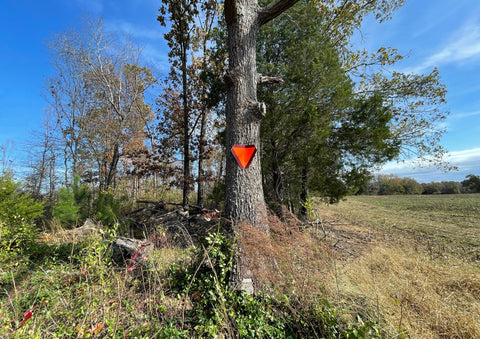
Parker’s Crossroads: Where Nathan Bedford Forrest Made the Union Weep
On December 31, 1862, the same day the much-bloodier Battle of Stones River raged to the east in Murfreesboro, Tenn., 1,800 Confederate cavalrymen under Nathan Bedford Forrest fought two Union brigades of Midwesterners at the hamlet of Parker’s Crossroads. In the preceding days, Forrest’s aim had been to disrupt Union supply lines in West Tennessee and Mississippi.
The battle resulted in roughly 750 casualties and almost the capture of Forrest, who ended up burnishing his reputation in this unheralded fight. Both sides claimed victory, but the battle is considered a Confederate triumph.
In the late 1960s, the construction of Interstate 40 bisected the battlefield, which today is maintained by the town of Parker’s Crossroads. Of the 1,400 acres encompassing the battlefield, 370 acres are preserved—all core hallowed ground, according to Steve McDaniel, a battlefield guide and longtime city manager. McDaniel is a lifelong Parker’s Crossroads resident whose family roots in the area date to 1820.
Battlefield walkers can explore four miles of paved trails and examine more than 50 interpretive markers in park areas on the north and south sides of the interstate. No historic homes remain standing on the battlefield.
About 85 miles west of Nashville, this remains a small town (pop. 284). From Parker’s Crossroads, visitors can travel to the Shiloh and Fort Donelson battlefields, each a little more than an hour’s drive away, or visit nearby Jackson, Tenn., where Forrest’s cavalry clashed earlier in December 1862 with Federal soldiers stationed at Salem Cemetery. For Civil War Trails sites to see in Jackson, visit historynet.com/jackson- tenn.
GET HISTORY 'S GREATEST TALES—RIGHT IN YOUR INBOX
Subscribe to our HistoryNet Now! newsletter for the best of the past, delivered every Monday and Thursday.
Close
Thank you for subscribing!
Submit
Visitor Center, Parker’s Crossroads, Tenn.
Visitor Center
A short distance off Exit 108 on Interstate 40 stands the small battlefield visitor center and museum. A display inside includes the Colt Model 1860 .44-caliber revolver of 3rd Tennessee Private Gideon Richardson (CSA), who suffered a mortal wound at Parker’s Crossroads, as well as a replica of a mountain howitzer used by Forrest’s troops. Visitors can watch an 18-minute movie about the battle in the museum. Outside, a Civil War Trails marker explains the action.
Parker House Site, Parker’s
Crossroads, Tenn.
Rev. John Parker House Site
Parker’s house, which no longer stands, and his surrounding fields and nearby orchard became the vortex of the battle. A slave holder and Baptist minister, Parker farmed cotton, corn, and tobacco. In the chaos of battle near the house, a U.S. soldier held Forrest at gunpoint and demanded his surrender. The wily Forrest told the Federal he had already surrendered and his men were stacking arms near the house. A trace of the old Lexington-Huntingdon Road—a vital battlefield route—can still be seen nearby.
Battlefield, Parker’s Crossroads, Tenn.
“Charge ’em both ways!”
In this field, on the north end of the battlefield park, Forrest supposedly uttered his famous four words when caught between Union brigades: “Charge ’em both ways!” Years ago, an archaeological survey in these fields turned up nothing but a piece of ancient pottery. “Bodies are out here,” McDaniel insists about battle casualties, “but we just don’t know where they are.”
Jones Cemetery, Parker’s Crossroads, Tenn.
John Parker’s grave in Jones Cemetery
A Unionist before the war, Parker died in 1864. His wife, Rebecca, died in 1871 and was buried next to him. The Rev. Parker supposedly switched allegiance to the Confederacy after a U.S. officer refused to move artillery placed in his yard during the battle. The Parkers’ graves are the only ones facing north in the cemetery. According to family lore, the doctor wanted to be buried facing that direction so he could kick the Yankees back home upon his call to heaven.
Tennessee State
Veterans Cemetery, Parker’s Crossroads, Tenn.
Tennessee State Veterans Cemetery
Near Jones Cemetery is a cemetery for 21st-century interments of veterans. But this burial ground has a connection to the Civil War, too. A Texas man had a marker placed here in memory of Addison H. White, who served in the 13th Tennessee Cavalry (U.S.). On April 12, 1863, he was killed at Fort Pillow, near Memphis, Tenn. White’s burial site is unknown.
Union Burial Site,
Parker’s Crossroads, Tenn.
Burial site for Union soldiers
This gray-granite slab in a strip of woods near Interstate 40 denotes the location of a burial site for Union fallen. Two years after the war, remains were exhumed for reburial in a national cemetery in Corinth, Miss. In 1993, an archaeological excavation uncovered remains of a soldier as well as a piece of blue wool. More bodies probably remain. “You don’t know where you’ll find a body out here,” McDaniel says. “It’s all hallowed ground.”
Confederate
artillery position, Parker’s Crossroads, Tenn.
Confederate artillery position
From this site on the south end of the battlefield, Confederate artillery enfiladed the U.S. Army line. It’s a battlefield interpretive area in a neighborhood of modern houses today. Years ago, a metal detectorist unearthed friction primers for artillery here. At the dedication of the battlefield in 2006, the concussion of a replica cannon fired at the interpretive area toppled a dogwood.
B.E. Scott Bar-B-Que, Lexington, Tenn.
B.E. Scott Bar-B-Que
10880 US-412, Lexington
After a trek around the battlefield, grab a bite at “the best at Parker’s Crossroads,” according to one reviewer. B.E. Scott was founded in 1962 to “make the best whole hog hickory smoked pit barbeque anywhere.” You can be the judge!
